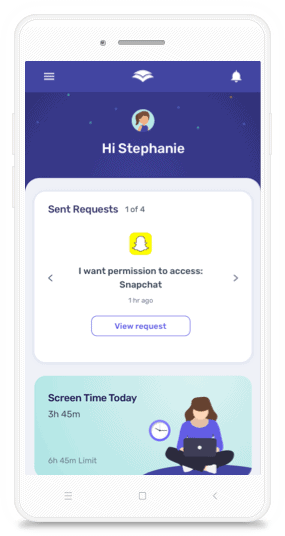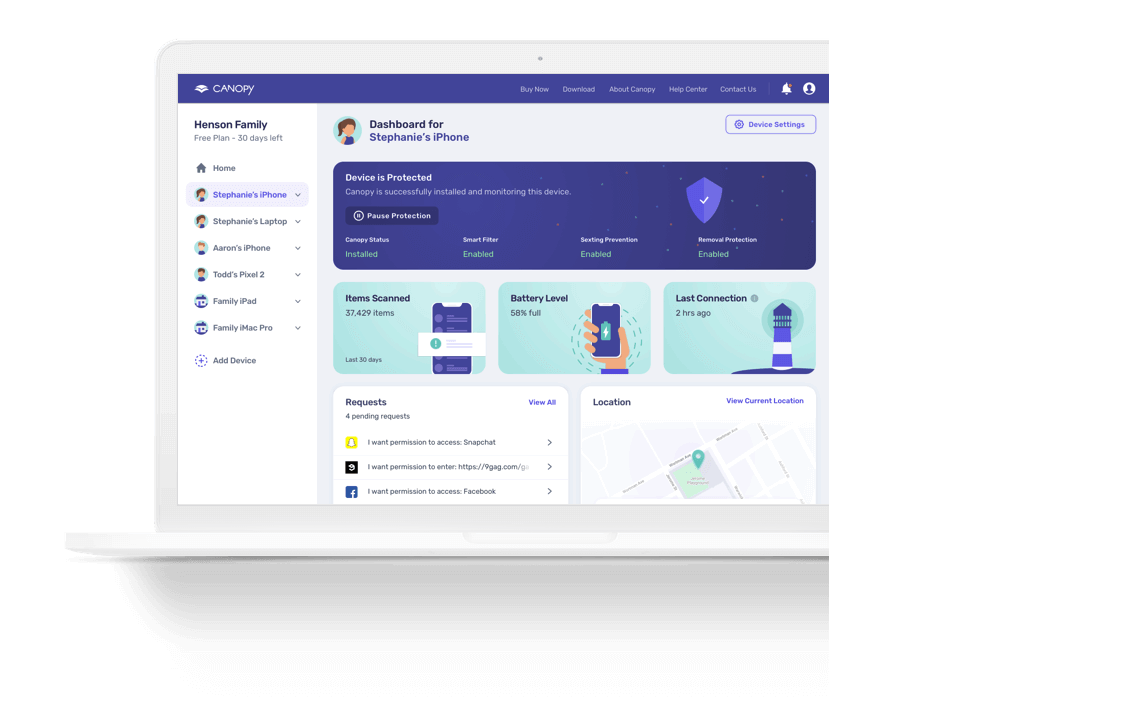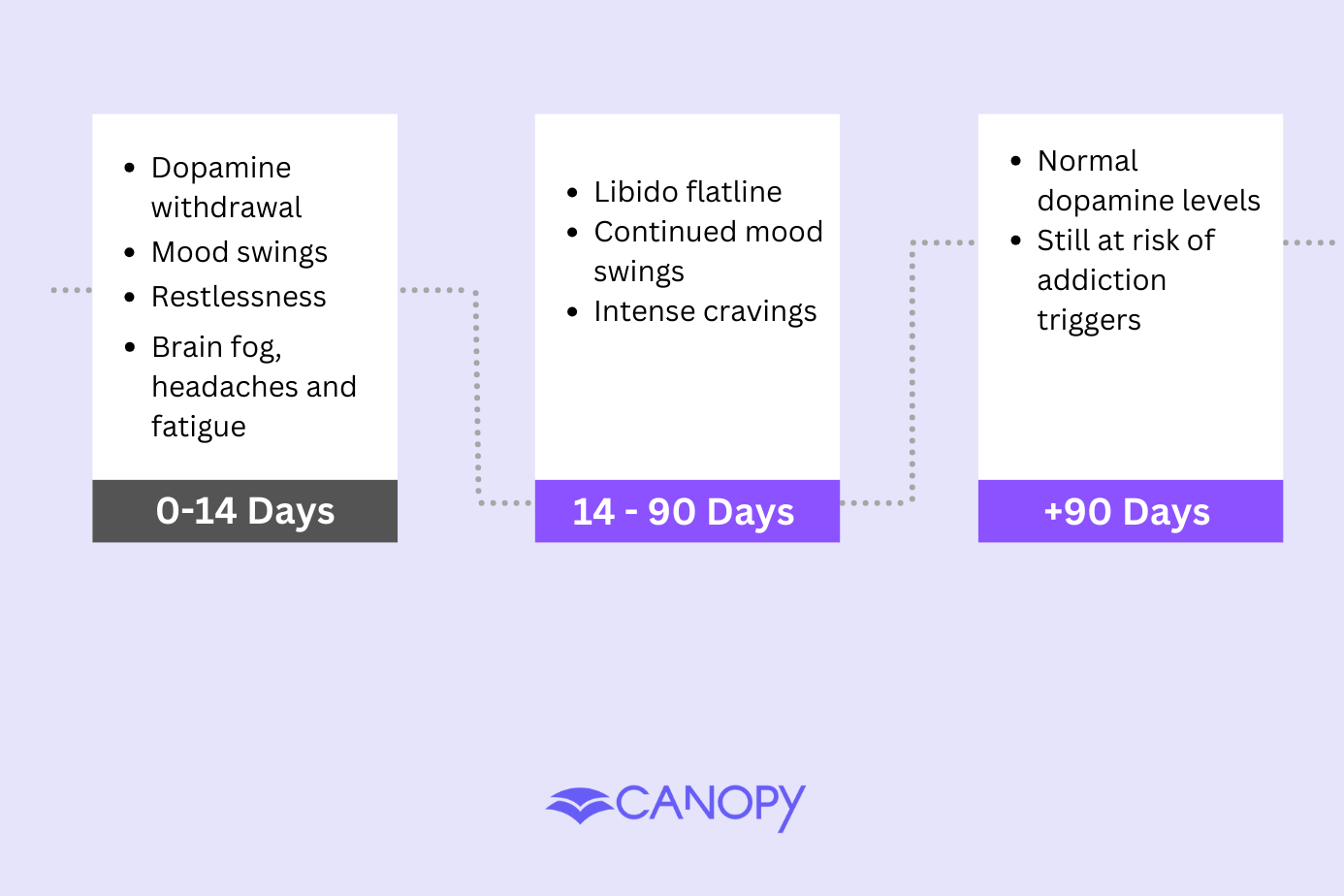What is a “deepfake”?
A “deepfake” is a digital manipulation of images, videos, or audio files, created using advanced artificial intelligence (AI) and machine learning technologies, that is very realistic and can be almost impossible to discern from authentic media. Sophisticated deepfakes can convincingly mimic real people doing or saying things they never actually did. The term “deepfake” is a combination of “deep learning” (a subset of AI that deals with neural networks) and “fake,” highlighting its basis in both technology and deceit.
Once a novel technology that was difficult to access, deepfakes have rapidly proliferated across the internet, sparking widespread ethical, legal, and social debates. The realistic nature of deepfakes poses significant challenges in distinguishing genuine content from manipulated media, making it crucial for individuals, especially parents and guardians, to stay informed about the latest developments and protective measures in this evolving landscape.
While deepfakes may not have been a concern when you were a kid, they are not only a present danger to your own children – they are easier and cheaper to produce than ever before, and much more difficult to identify. They are becoming incredibly widespread, and the threats they pose are only increasing.
How are deepfakes created?
Deepfakes are created using sophisticated AI algorithms that require two primary components: a dataset of images or videos and a deep learning model, typically a Generative Adversarial Network (GAN). The deepfake creation process involves feeding vast amounts of visual and/or audio data into these models, which then learn to mimic the appearance, speech, and mannerisms of the target individual.
This technology allows for the creation of content where individuals appear to say or do things they have not, with a level of realism that can be startlingly convincing. The recent advance of deepfake technology means it’s now accessible not just to experts but to anyone with a computer and internet connection, as well as with minimal or no funds, raising significant concerns about misuse and proliferation. As this technology evolves, the implications for privacy, consent, and misinformation are profound, emphasizing the need for public awareness and understanding of the mechanics behind deepfakes.
How can I tell if an image or video is a deepfake?
Identifying a deepfake can be challenging if not impossible, as the technology behind them continues to advance rapidly. However, there are several indicators that can help discern genuine content from manipulated media. These include inconsistencies in lighting or shadows, unnatural movements or facial expressions, and irregularities in the background or edges of the figure. Audio deepfakes may exhibit mismatched lip-syncing or unusual speech patterns. Advanced tools and software are increasingly available to detect deepfakes, but a critical, questioning approach combined with technological assistance can be effective in identifying manipulated content. Educating yourself and your family on these signs is a crucial step in navigating the evolving digital landscape safely.
In what ways is deepfake pornography a danger to my child?
Deepfake pornography represents a significant danger to children, firstly by exposing them to sexually explicit content featuring seemingly real individuals without their consent. This exposure can distort a young person’s understanding of consent, sexual relationships, and body image. However, this is a danger inherent in pornography in general, and is not unique to deepfakes.
A singular threat presented by deepfakes, that we are witnessing more and more of in the news, is that a malevolent actor may create and distribute deepfake pornography of your child.
There are two major categories of this threat: Sextortion and cyberbullying.
Sextortion is when a criminal uses explicit photos and videos of someone to engage in blackmail, which may be for money or for additional explicit content. The victim is threatened that if the sextortionist’s demands are not met, the explicit content will be spread far and wide to friends, family, and strangers. Children are often the targets of this crime, and because of deepfakes, the criminals can skip the step of obtaining the pictures and videos of their victims – they can create them themselves! It matters little to children whether or not that content is authentic – they would still be terrified of it being shared with everyone they know, and will be willing to consider the sextortionists’ demands.
The second threat is that deepfake pornographic images of a child can be shared with his or her social circles, classmates, and family by a bully. There is no blackmail involved here, but the damage can be just as severe. A subcategory of this danger is revenge porn – a disgruntled ex can created deepfake pornography of your child as a form of revenge.
What can happen to my child as a result of these dangers?
Deepfake pornography can have devastating effects, leading to emotional distress, anxiety, depression, and social isolation for the victim. In some cases, this has even resulted in suicide. The permanence and ease of proliferation of online content exacerbates these issues, potentially damaging future relationships and career opportunities. Sextortion can trap children in cycles of abuse, and can even present dangers to their safety.
What should I do if I suspect my child is creating deepfake pornography?
It’s important to approach the situation with care and urgency. Begin by observing their online activities for any signs that might confirm your suspicions. The Canopy parental control app has a Sexting Alerts feature which can notify you if pornography – even if it is deepfake – is being sent or received by your child. Canopy also filters within a device’s browser, so if your kid is attempting to use a browser-based app to create deepfake pornography, Canopy will serve as a roadblock and as a means of notifying you.
Discuss your concerns with your kid, and aim for an open and non-confrontational conversation to understand their actions and intentions. Highlight the ethical, legal, and personal consequences of creating and sharing non-consensual explicit content. Stress the importance of respect, consent, and the long-term impact of digital actions on both the creator and those depicted. This conversation is an opportunity to educate your child on digital ethics and the significance of a positive (or at least not negative!) digital footprint.
Seeking advice from professionals, such as educators or psychologists, can also be beneficial. Addressing this issue promptly can help prevent potential harm to both victims and your child, and reinforce responsible online and offline conduct.
What should I do if my child is sharing deepfake pornography?
If you discover that your child is sharing deepfake pornography, it is essential to address the situation immediately but sensitively. Begin by having an open and honest conversation with your child about the serious consequences of their actions, both legally and ethically. Explain how such behavior can harm others and potentially lead to significant repercussions for themselves, both now and in the future. Use this as a teaching moment to instill values of empathy, consent, and respect for privacy. Enhance your oversight of their digital activities using tools like Canopy, which can monitor online behavior and block access to harmful content. It may also be beneficial to involve a counselor or therapist to help your child understand the impact of their actions and develop healthier social and online behaviors.
What should I do if my child is a victim of deepfake pornography?
If your child has been victimized by deepfake pornography, provide them with immediate emotional support and reassurance that they are not at fault. Document all evidence of the deepfake content and report it to the authorities, including your local police department (to its cybercrime unit, if they have one). You should also contact the websites or platforms where the content was posted to request its removal. Protecting your child’s mental health is crucial, so consider seeking professional help from a psychologist who specializes in cyberbullying or digital trauma. Utilize a parental control app like Canopy which can detect explicit images being sent or received, which can give you a heads-up to further cyberbullying even if your child does not confide in you.
How can I tell if my child is being sextorted with deepfake pornography?
Sextortion involving deepfake pornography can be challenging to detect, but there are signs you might notice. If your child becomes unusually secretive about their online activities, appears stressed or anxious after using the internet, or suddenly withdraws from family and friends, these could be red flags. Monitor any unusual requests for money or gifts, especially if your child seems anxious about meeting these demands. Encourage open communication about any online interactions that make them feel uncomfortable, and make use of monitoring tools like Canopy’s Sexting Alerts to keep an eye on suspicious communications. If you suspect sextortion, contact the authorities immediately and consult legal advice to address the situation effectively.
How can I discuss deepfake pornography with my kid?
Discussing deepfake pornography with your child is vital to ensure they understand the dangers associated with it. Approach the conversation with care, focusing on the importance of digital literacy and ethical online behavior. Explain what deepfakes are, how they are created, and the potential harm they can cause to individuals and relationships. Stress the importance of respecting others’ privacy and the legal implications of creating or sharing manipulated content. Keep the discussion age-appropriate and encourage your child to come to you with any questions or concerns they might have about things they encounter online. Use this opportunity to set clear expectations about acceptable online behavior and the family’s values regarding digital conduct.




